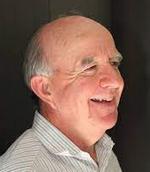EFAC Australia
How Are We Going with Evangelism?
- Details
- Written by: Julie-Anne Laird
 Recently, in my role as Chair of Lausanne Australia, we gathered 330 key leaders around Australia and I asked people to vote on how we're going with evangelism? In each State, the agreed amount was either 2/10 or 3/10. People really feel like we are failing in evangelism. In my other role as the Specialist Consultant for Evangelism and Mission for City to City Australia, I've been going around to Churches and helping them try and turn around with evangelism. This has been so good! But similarly, people really feel like we are not doing well with evangelism. Here's a few things that I've observed...
Recently, in my role as Chair of Lausanne Australia, we gathered 330 key leaders around Australia and I asked people to vote on how we're going with evangelism? In each State, the agreed amount was either 2/10 or 3/10. People really feel like we are failing in evangelism. In my other role as the Specialist Consultant for Evangelism and Mission for City to City Australia, I've been going around to Churches and helping them try and turn around with evangelism. This has been so good! But similarly, people really feel like we are not doing well with evangelism. Here's a few things that I've observed...
1. We Need To Pray
The thing to note is that Christians have a real heart for their non-Christian friends and would love them to know Jesus, but they feel inadequate to speak and they have lost the burden to pray. I often say, it's like we've given up on God, that he could possibly draw our friend or family member to Himself. All revivals start with prayer, and I feel like things are shifting in Australia. We know we are not doing that well now, which is a good posture to have because we know we need God. Really, this should have always been our posture but somehow, we think we can do it without God if we are not praying.
Preaching in Australia Today: We Need More Bridges!
- Details
- Written by: Peter Adam
 The task of every preacher is the same as the task of everyone who reads the Bible. Build a bridge between the Bible and Life Today!
The task of every preacher is the same as the task of everyone who reads the Bible. Build a bridge between the Bible and Life Today!
We can get wrapped up in the Bible, enjoy its story, its ideas, its images, its instructions, but not build a bridge to cross over to Life Today.
Or we can be so absorbed by Life Today, its issues, pleasures, problems, dilemmas, tragedies, that we cannot move to the Bible without feeling irrelevant. Then we do not build a bridge to cross over to the Bible to learn and preach its message, and how it applies today.
We need to do the whole journey: immerse ourselves in the Bible deeply and thoroughly, and immerse ourselves in Life Today deeply and thoroughly. Without the Bible, people will not hear God’s words, and will not know Christ as God has revealed him. Without Life Today they will not know how to live in faith and obedience to God, how to follow Christ.
My impression of preaching in Australia in 2020?
Read more: Preaching in Australia Today: We Need More Bridges!
Homiletical Health Check
- Details
- Written by: Mike Raiter
 Homiletical Health Check: The State Of Preaching In Australian Churches
Homiletical Health Check: The State Of Preaching In Australian Churches
I’m in a reading group and we’re discussing Chris Watkins, Biblical Critical Theory. We were asked to summarise the book in a couple of sentences. If you know this 600+ page brilliant analysis of the Bible and Western culture (a book none of us have yet finished), then I could no more summarise it in a few words than swim the Pacific Ocean. I feel the same sense of being set a daunting task in analysing the current state of preaching in both the evangelical Anglican scene and the wider church scene. But I love a challenge.
My approach has been to choose at random 10 evangelical churches from 10 Anglican Dioceses (Northern Territory, Brisbane, Armidale, Sydney, Bathurst, Melbourne, Tasmania, Adelaide, Perth, and N.W. Australia). While I’m personally acquainted with a couple of the preachers, I’d never heard any of them preach before. And I’ve kept the church and preacher anonymous.
Then I’ve randomly selected 10 non-Anglican evangelical churches from Brisbane (I’d just returned from there and so was still in the zone). The churches are Baptist, Independent Baptist, Pentecostal, Church of Christ, Methodist, Lutheran, Presbyterian, Brethren, Christian & Missionary Alliance, and Salvation Army. I didn’t know any of the preachers, nor had I heard them before. Again, I’m not identifying any of the churches.
Revitalising Youth Ministry
- Details
- Written by: Brian Holden
 In 2022, Brian Holden led a group of children’s, family and youth ministers on a tour of Queensland churches with growing children’s and youth ministries. This trip took place as part of a ‘community of practice’ - intentionally exploring different approaches to working with young people. They attended some of the youth events and meetings, and met with the youth leaders, staff and clergy in each church. The following is a collation of thoughts from the team as they reflect on what we learnt.
In 2022, Brian Holden led a group of children’s, family and youth ministers on a tour of Queensland churches with growing children’s and youth ministries. This trip took place as part of a ‘community of practice’ - intentionally exploring different approaches to working with young people. They attended some of the youth events and meetings, and met with the youth leaders, staff and clergy in each church. The following is a collation of thoughts from the team as they reflect on what we learnt.
INVESTMENT IS KEY
If you prioritise children’s ministry it will grow … Some churches did this by investing in modern buildings, spaces and resources. Others had everyone in the leadership read and discuss books like Growing Young: Six Essential Strategies to Help Young People Discover and Love Your Church (by Kara Powell, Brad Griffin and Jake Mulder, Baker Academic, 2016) to better understand how to grow children and youth ministry and why it is important.”
“The churches we visited had children and youth as a strong part of the church’s culture and DNA. This was clear when we talked to the senior leaders – they had taken the time to invest in the ministries to young people.”
Church Revitalisation in Tasmania
- Details
- Written by: Joel Nankervis
 Joel Nankervis is the minister of Circular head Anglican church, Tasmania. Mark Simon spoke with him about revitalising the church.
Joel Nankervis is the minister of Circular head Anglican church, Tasmania. Mark Simon spoke with him about revitalising the church.
Mark: how would you describe the state of the parish when you commenced?
Joel: The church is based in Smithton, in the far northwest of Tasmania. The town’s population is 4000 people. The main industries are farming, fishing and forestry. The town has an ‘end-of-the-road’ feel to it since there’s wilderness to the south and nothing but ocean to the north and the west. Many residents of the town and surrounding areas have historically been part of the Brethren church, and more recently, Pentecostal churches have emerged, as well as those who identify as Anglican. But many of these Christians of whatever background had become disconnected from church life.
Focusing specifically on the Anglican parish, when I began in 2017, it had been 20 years since the previous stipendiary minister. Circular Head was an Enabler Supported Ministry for those 20 years. Under this model, a local team was raised up of leaders, including 1-2 locally ordained people, and this team was supported by a trained member of clergy called an Enabler, who covered 3-4 parishes. This model operated for around 20 years in Tasmania but has now ceased across the parishes that were using it. The local leaders had become quite tired after the years of doing ministry this way. The congregation had dwindled to around 20 people.
Page 2 of 12
